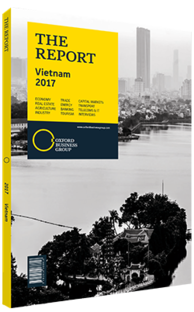New agreements and initiatives to keep Vietnam's manufacturing sector on top
With the signing a series of free trade agreements (FTA), Vietnam’s textile and garment sector will see a host of new business opportunities as well as new challenges as competition among regional producers heats up. It is crucial that the industry continues to attract orders; it has been a major revenue generator for the country’s economy, with some 5000 textile and garment businesses in operation, supporting more than 2.5m jobs. The export value of textile and garment products ranks second in the country’s total export revenue, and the Vietnam Textile and Apparel Association (VITAS) has said the goal for 2016 was an export turnover of $29bn, a $2bn increase on the previous year. The country’s biggest export markets continue to be the US, followed by the EU, though Vietnam has started to expand into new markets such as South Korea, Taiwan, the Middle East and Singapore. Vietnam has also been receiving a surge in orders from Japan since the talks on joining the Trans-Pacific Partnership began, although the US has officially withdrawn from the deal.
Meanwhile, the government has been busy signing FTAs with countries such as Russia, for example, to further boost and diversify exports. Tapping into new export markets for local production is vital for the country to compete with regional rivals. The main advantage for Vietnam has been its low labour costs, but this will be counteracted by the rise in minimum wages. Indeed, the monthly minimum wage for workers in sewing companies has risen from $18 in 1998 to $150 in 2015, and saw a 12% increase in 2016. Nevertheless, simply relying on labour costs is not enough, as higher skills and new technology will be required if Vietnam is to keep its order books full. The level of skilled labour could still be a challenge for further growth in the industry, and VITAS has been working on enacting programmes focused on training and improving skill levels, especially for designers, as there is little original design emerging from the country.
VITAS has also expressed concerns that local textile and garment exporters will face fiercer competition from manufacturers from Laos and Myanmar, as these countries have preferential tax rates for US and EU exports. Currently, the tax on Vietnam’s textile and garment exports to the US is around 17%, while the rate to the EU is closer to 10%. These taxes were slated to drop to zero in 2018, but this remains to be seen as countries work out what to do in the wake of the cancelled trade deal. The Vietnam-EU FTA is still on track to take effect, however, and should bring lower tax rates.
Foreign investors continue to arrive and with them has come new technology and know-how. According to VITAS, foreign direct investment in textile and garment manufacturing totalled $2bn by the end of 2015. A raft of companies from the US, China and Japan have been arriving recently, and other countries such as Taiwan have also been investing in the country to reap the benefits of its FTAs. Polytex Far Eastern, under Taiwan-based Far Eastern Group, is set to build a $274m clothing production complex, covering 99 ha. The group has said it has plans to spend another $700m on a second phase of development.
Mergers and acquisitions are also picking up pace as many smaller companies are having a tougher time meeting orders. Of the 5000 companies in operation, only around 500 are considered large, while 80-90% fall into the small and medium-sized enterprise bracket. There have been more occurrences of smaller producers selling off their workshops and machines. Some investors have been keen to buy local textile and garment companies that already have production lines and employees, as they sometimes face regulatory difficulties in expanding production. The textile and garment industry is in a good position to grow stronger, but as VITAS has pointed out, the government needs to have a long-term strategy for further developing and investing in the industry.
You have reached the limit of premium articles you can view for free.
Choose from the options below to purchase print or digital editions of our Reports. You can also purchase a website subscription giving you unlimited access to all of our Reports online for 12 months.
If you have already purchased this Report or have a website subscription, please login to continue.

